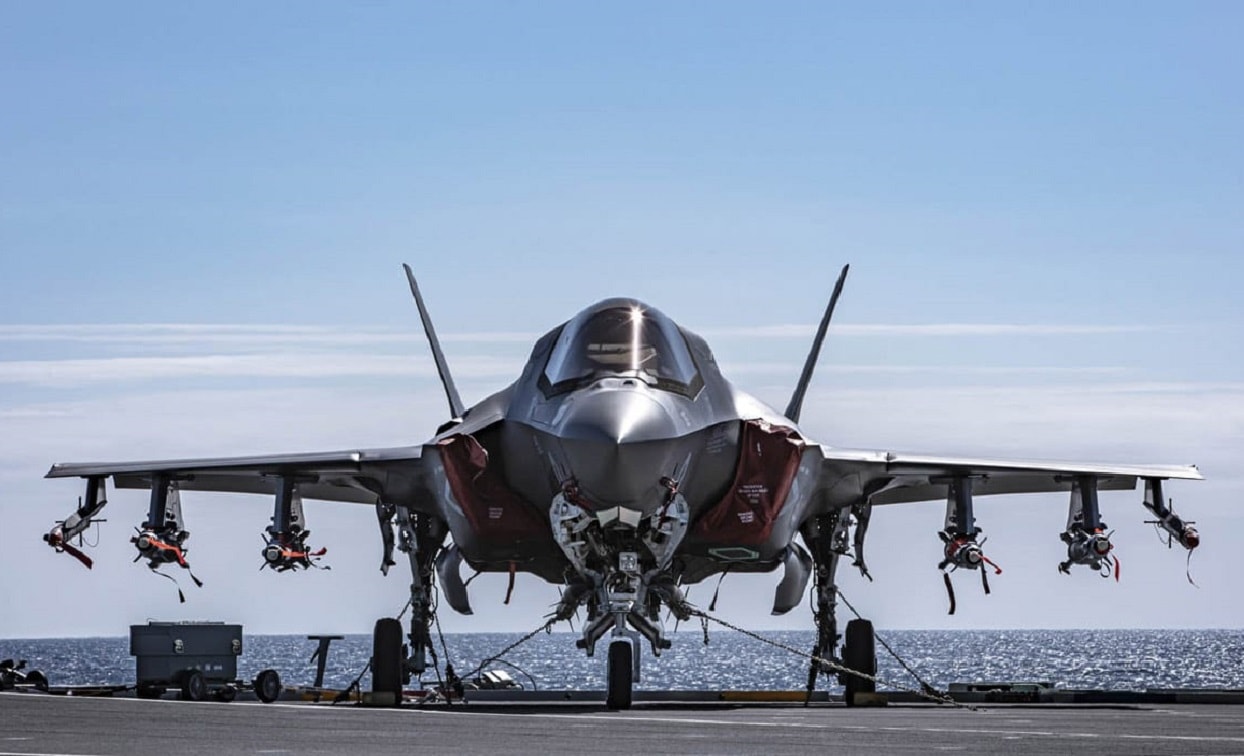A pair of Lockheed Martin F-35A fighters in service with the Royal Australian Air Force (RAAF) recently operated with a full weapons load – otherwise known as “beast mode” – during a recent training flight from RAAF Darwin, as part of the Arnhem Thunder 21 exercise. The two fifth-generation combat aircraft carried four inert GBU-12 bombs under their wings, along with unspecified weapons loaded internally.
The weapons were reportedly dropped on a range.
“This design feature allows Australian F-35As to be adapted to suit the threat environment and operational requirements,” said Mathew Harper, commanding officer of 35 Sqn. “This mode would most likely be used in less contested environments where rapid employment of ordnance is prioritized over maximizing the F-35A’s stealth capabilities.”
The Multi-roles of the F-35
The Lockheed Martin-built Joint Strike Fighter was developed to be a “multi-role” stealth fighter, which in essence means that it was specifically engineered with an ability to launch massive air attacks on air-to-air and air-to-ground targets. The aircraft employs an internal weapons bay intended to enable attacks against an adversary while preserving a stealth configuration, yet can be utilized in a full-force attack by employing the external pylons as well – which has become known as its “beast mode” or “bomb truck.”
The different weapon layouts are meant to accommodate a range of tactical scenarios.
The “First Day of War” loadout would preserve the “stealth” configuration, and could consist of four AIM-120 AMRAAM missiles for air-to-air missions, or a mixture of four AIM-120s/GBU-31 JDAM “smart bombs,” for air-to-ground missions, all of which would be loaded into the F-35’s internal armaments bay. As the name implies, stealth loadouts are designed to minimize radar cross-section and to maintain low observability (LO) when the enemy’s anti-air systems are operating at full capacity.
As an adversary’s hostile anti-air systems – including sensors, air defense missiles, gun systems, and even enemy aircraft – are eliminated, and the conflict enters into the “Third Day of War,” the loadout would change accordingly. When it is determined that the F-35 no longer needs to rely on its stealth and LO for survivability the “beast mode” comes into play as the F-35 then deploys externally-mounted weapons with a larger radar footprint.
The weapons loadout is significantly larger.
In stealth mode, the F-35 can carry 5,700 lbs internally, while in “beast mode” it can carry a full 22,000 lbs, of both air-to-air and air-to-ground munitions.
Advance Australia Fair
The RAAF’s F-35As achieved initial operational capability (IOC) in December 2020, and it had been a long-stated goal for the RAAF. The IOC milestone included the ability to employ weapons such as the Raytheon AIM-120 AMRAAM medium-range air-to-air missile, AIM-9X Sidewinder missile, the Joint Direct Attack Munition, Small Diameter Bombs, and the type’s internal 25mm cannon.
According to Flight Global, Cirium fleets data shows that the RAAF has thirty-seven in-service F-35As out of a total planned seventy-two that had been ordered by the government in Canberra with the last one is projected to be delivered to Australia by 2024. The RAAF currently maintains a joint pilot training and maintenance presence at Luke Air Force Base (AFB), Arizona where RAAF pilots can take part in joint training with the U.S. Air Force pilots.
Australia announced in 2009 that it had selected the conventional takeoff and landing (CTOL) F-35A Lightning II to replace its F/A-18 Hornet fighter fleet.
Peter Suciu is a Michigan-based writer who has contributed to more than four dozen magazines, newspapers and websites. He regularly writes about military small arms, and is the author of several books on military headgear including A Gallery of Military Headdress, which is available on Amazon.com.

